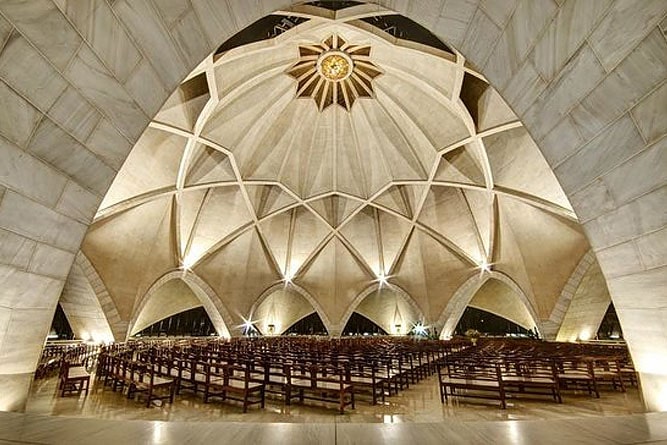Lotus Temple (Bahai House of Worship)
Temple in Delhi
should-see attraction
Opening hours: 8:00am-5:00pm Tuesday-Sunday (closed on Monday)
Address: Lotus Temple Rd, Bahapur, Shambhu Dayal Bagh, Kalkaji, Delhi
Ticket price: Free
Visit duration: People typically spend up to 1 hour here
Website: www.bahaihouseofworship.in
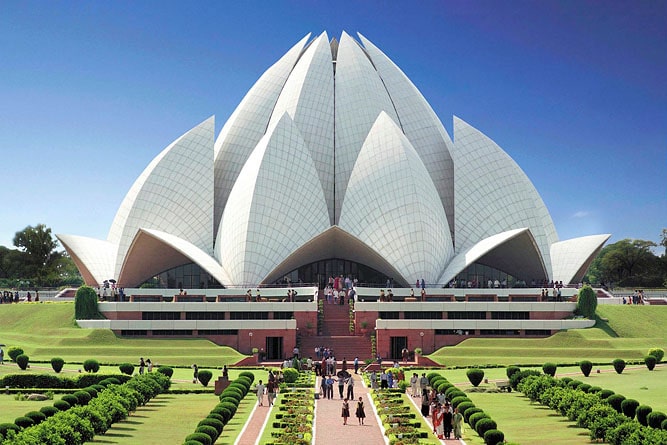
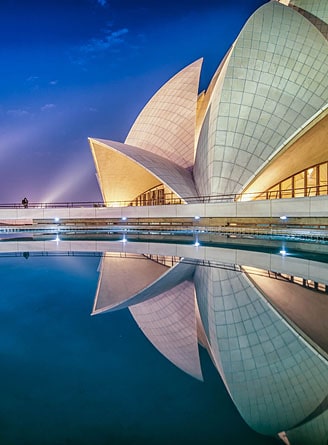
About the Lotus Temple, Delhi
The Lotus Temple is a Bahai House of Worship. It is in New Delhi, India. The temple is the archetypal example of peace and serenity, a tranquil dimension to escape from the buzzing city. The temple presents the architecture and culture that is part of the new world.
The Lotus Temple is one of the most visited architectural sites in the world. UNESCO gave a permanent delegation to India in April 2014.
The lotus flower holds a sacred place in different religions like Hinduism, Islam, Jainism and Buddhism. The structure of the flower alludes to the unification of people beyond religion, culture and caste.
History of the Lotus Temple
The Lotus Temple was inaugurated on December 24, 1986. The temple is dedicated to the Baha'i Faith. The construction of the temple was completed in 18 months.
The chief architect of the temple was Fariborz Sahba. He designed the temple and supervised the construction. The UK firm Flint and Neill was in charge of the structural design. While the construction was overlooked by Larsen and Toubro Limited.
The construction of the temple cost $10 million and a major portion was funded by Ardishír Rustampúr from Sindh, Pakistan. He desired to donate his entire life savings to buy the land and construct the temple. A sum of money was left after the temple was completed, so it was decided to build a greenhouse to study the native plants and flowers as a courtesy that suits the purpose of the temple.
The Lotus Temple receives a lot of praise across every domain from architecture to art and culture and religion.
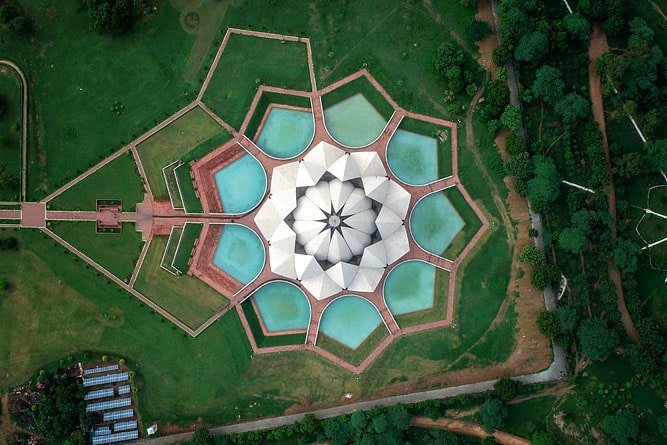
Architecture of the Lotus Temple
The Lotus Temple mirrors the exact image of the lotus flower. The temple occupies a total of 26 acres of land including the gardens and ponds. The temple features a dome reflecting a lotus transitioning from its budding stage to the blooming form.
The scripture of the Baháʼí specifies the necessity of the circular nonagon structure for the house of worship. It also demands no depiction of idols, pictures or images and no altars or pulpits to be built inside the temple. A simple podium for the readers can be raised.
The temple's walls, made of white marble, are carved in the shape of a lotus petal. The structure's base follows the nonagon shape. The walls are clustered in a nine-fold pattern with three layers on each side.
The walls of the temple have a chequered design carved on its exterior side. The walls are settled in a way to let the light of nature illuminate the interior of the temple. The central hall of the temple rises to a height of 111.5 feet.
The structure reflects the architectural features noted in the scripture. The centre hall of the temple can be entered from nine doors. The temple is enclosed by nine ponds. Each pond is separated by pavements leading to the temple. The ponds are embraced by luxuriant green gardens.
The Lotus Temple won many awards in the architectural domain.
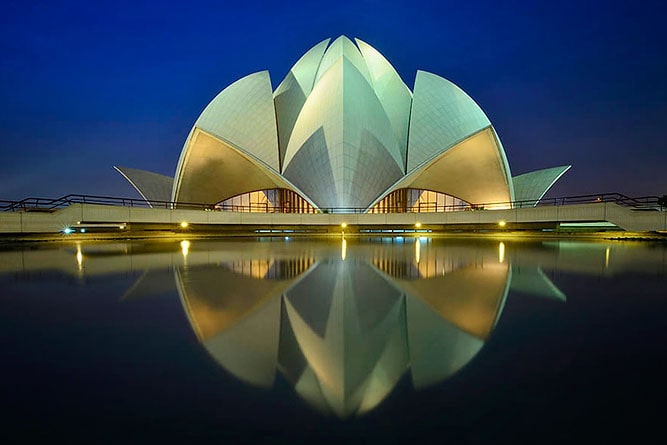
Entry fee and timings
The Lotus Temple does not require any payment to enter. It is closed on Mondays. The temple is open from 9:00 am to 5:00 pm.
The prayer sessions of the temple are for 15 minutes at 10:00 am, 12:00 pm, 3:00 pm and 5:00 pm.
Facts and tips about the Lotus Temple
- If you visit the temple during prayer times, it is impolite to leave in the middle of the prayer. The temple management requests the visitors to stay in the temple until the prayers are over. Also, reading non-scripture texts, playing instruments, delivering sermons or raising funds is prohibited inside the temple.
- The temple gets the most visitors during the weekend. Even with a vast crowd, it is advised not to speak loudly or cause commotion inside the temple. It is a place for meditation and silent praying.
- The white marble used in the construction of the Lotus Temple is imported from the Penteli mountain in Greece. Parthenon was also built with marble from the same source.
- The temple is the first to use solar power. It has solar panels that generate electricity which saves the temple a fortune on the electric expenses.
How to reach the Lotus Temple
The Lotus temple is located in the south of Delhi. It is a 10-minute drive from Humayun's Tomb and it takes 20 minutes to reach the Lotus temple from Qutb Minar by car.
See location on Google Maps
Other attractions near Lotus Temple
- Humayun's Tomb - 5.8 km
- Qutb Minar - 10 km
- Connaught Place - 13 km
- Jama Masjid - 15 km
- Red Fort (Lal Qila) - 15 km
FAQs about the Lotus Temple
1. Is photography allowed inside the Lotus Temple?
No, photography is prohibited inside the temple. However, photography outside the temple is allowed.
2. Is the Lotus Temple the only Baháʼí House of Worship?
No, there are 7 more Baháʼí House of Worship across the globe. In India, however, the Lotus Temple is the only Baháʼí House of Worship.
3. Can everyone enter the Lotus Temple?
Yes, everyone can enter the Lotus Temple.
4. Can we bring food to the temple?
No, food is not allowed within the perimeter of the temple. However, there are many restaurants close to the temple where you can have your meal.
